
I don’t do negatives in life as best as I possibly can, or at all. I find the dwelling on them an entirely pointless exercise. Problems, as best as possible should be dealt with and or very simply eliminated, move on and enjoy the finer things in life.
On this occasion however, in order to tell you the very good I need to dwell a little on the bad, at some point – I’ll sidetrack to that shortly – solely so as one may contrast what makes or constructs a better best lawn.
This is the story of a lawn. What it was was previously and how it was constructed correctly.
Horticulturally, the existing ‘lawns’ status was as follows:
- it could not drain water
- to the surface, the percentage of moss/ perennial weeds was greater than that of grass plant, per sq m.
- on inspection, it had been built on rubble, at points 1000 mm depth, mixed with less than 8% of sub soil.
The solution was:
- remove the existing sub ‘soil’/ rubble.
- replace with a proper suitable preferred growing medium.
- the building and install of a system of drains.
Further:
- access was not allowing machines in
- the lawn was just under 600 square metres in size
- to put that in context, your average semi-d back garden lawn may be 80 sq m
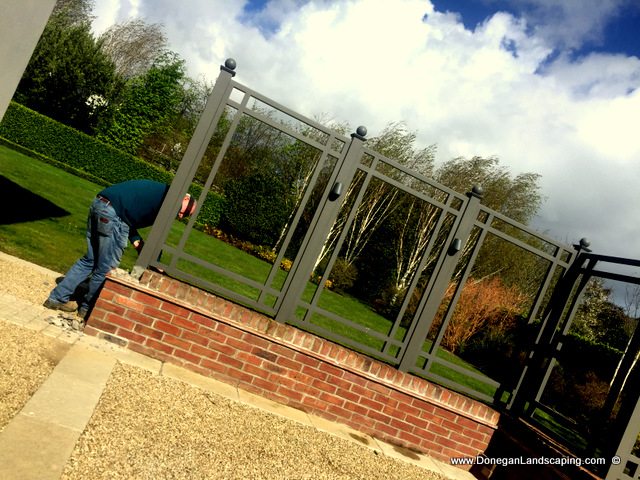
Of note. when doing this correctly – equations:
- length x breath = surface area in sq metres, in this case of lawn
- length x breath x height = cubic metres in – and also out. In this case of ‘soil’.
- length = length. in this case of pipes
- equation = amounts. times. costs. not, quote.
The last part, no. 4 in mind – the only way to make the price lower:
- take out less – bad ‘soil’
- bring in less – good/ proper soil
- spend less time – by doing less
- note: do it right. and equations.
Step 1: part wall removal – to allow access
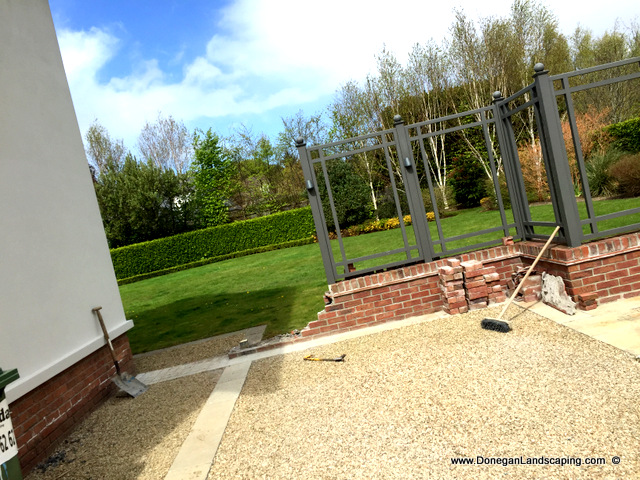
Step 2: machinery in
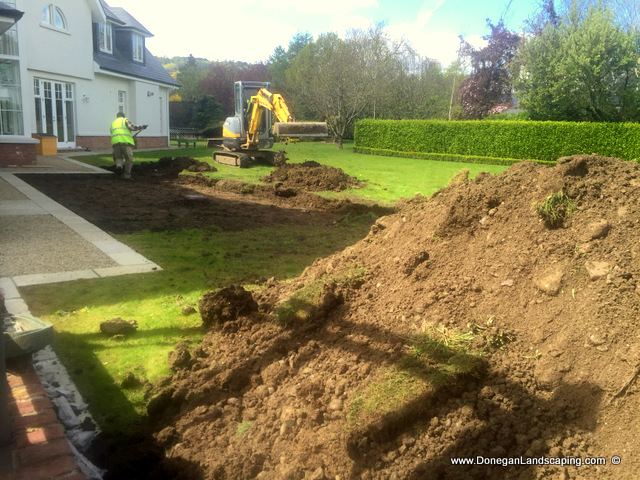
Step 3: removal and banking of soil in 20 tonne amounts

Step 4: layout and construction of drainage system
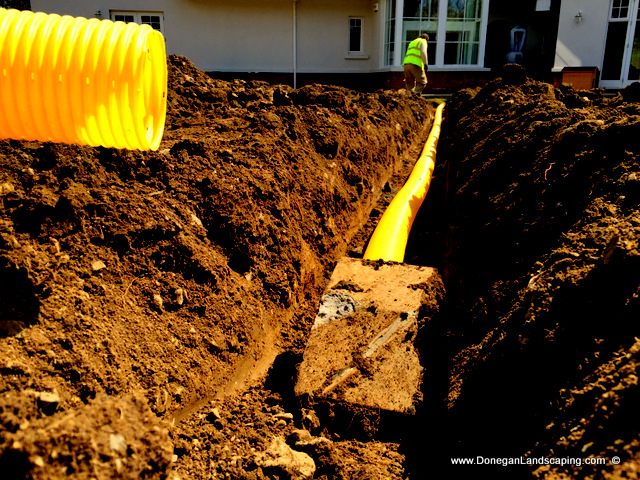
Step 5: old ‘soil’ removal – 7 trucks in total
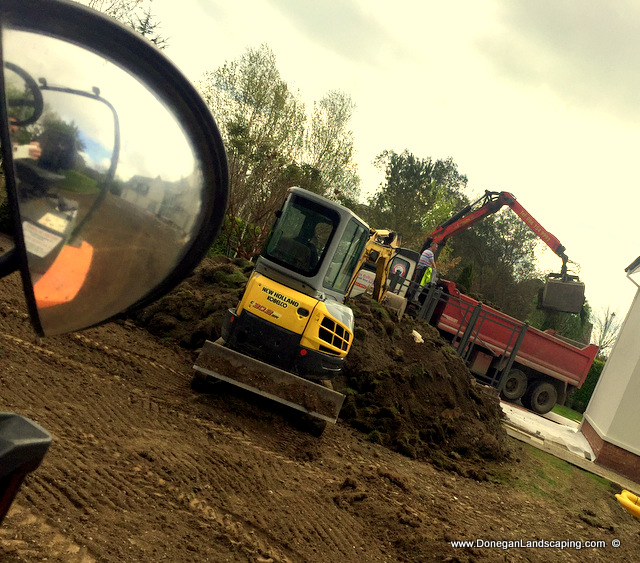
Step 6: introduction of new growing medium – 7 trucks in total
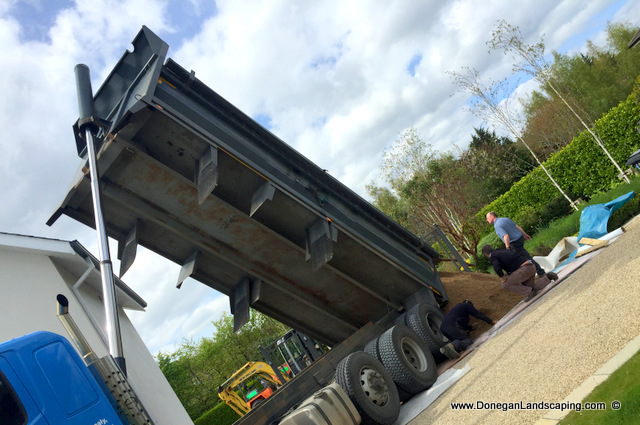
Step 7: mixed at correct ratios, a higher pH (sand) balances the lower pH (peat).
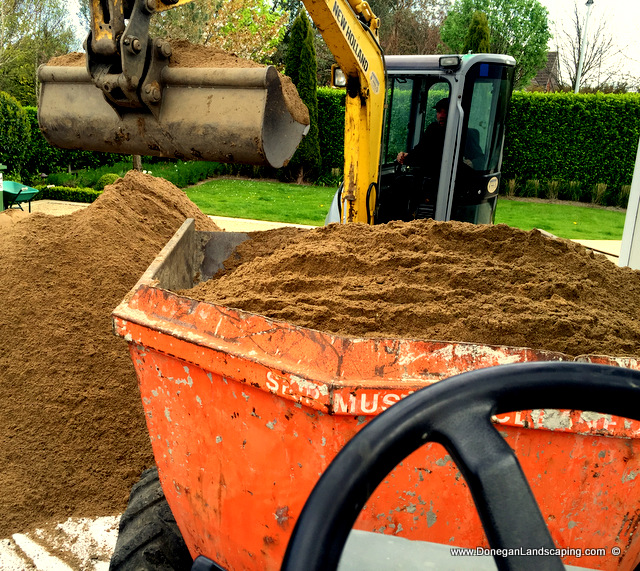
Step 8: drainage infrastructure in place…. levels are set

Step 9: levelling of finish levels
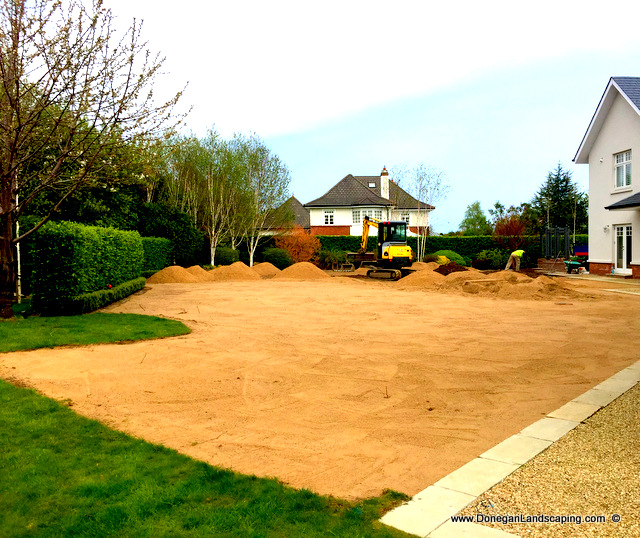
Step 10: lawn now laid – the wall is rebuilt
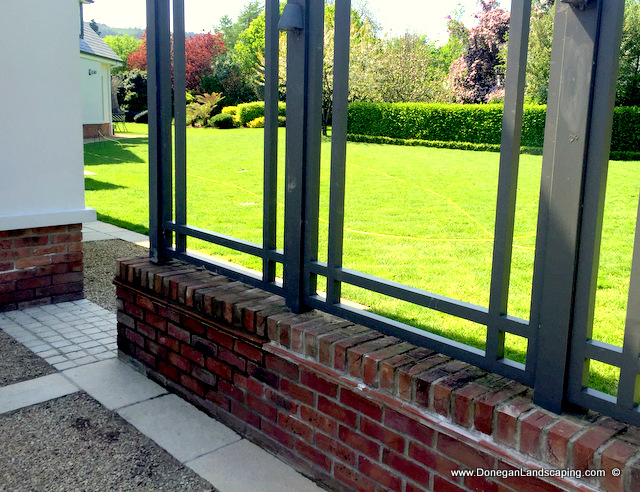
By Way of Explanation:
This is a lawn built essentially on sand – let’s call it that for the minute. And if you have ever sat on the beach, built sand castles or a little more by way of explaining; taken a (in your imagination) bottomless cylinder of sand and poured water into it, you’ll know that the water will free drain through. Unlike lets when you try pouring a drop of water into lumpy porridge and it quite simply does not go anywhere – which is essentially what the old lawn was built upon. I hope that makes sense.
That basic principle and understanding of it is hugely important. Because we have now gone from the point where the water would not go anywhere, to a point where it drains perfectly through the now new growing medium; bearing in mind this is Ireland; and our rainfall levels more than outweigh our sunshine levels over a 12 month period.
The biggest challenge:
The biggest dilemma here was not the build timelines or weather, far from it. It was selecting a lawn surface finish that blended with the existing lawns at the side of the house; as versus making me look like an absolute genius and – more to the point – the remaining and existing lawns look, not as good.
As noted so many times before, this is not the Peter Donegan memorial garden – and – of Client (I hate that word), not one is more important.
Vorsprung durch Technik. Built to perfection. Above and below ground level.
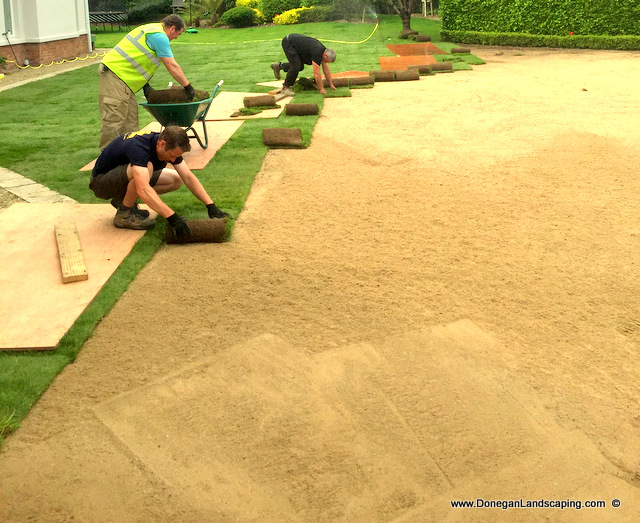
Source: Donegan Landscaping – Landscaping Dublin: Lawn Construction





